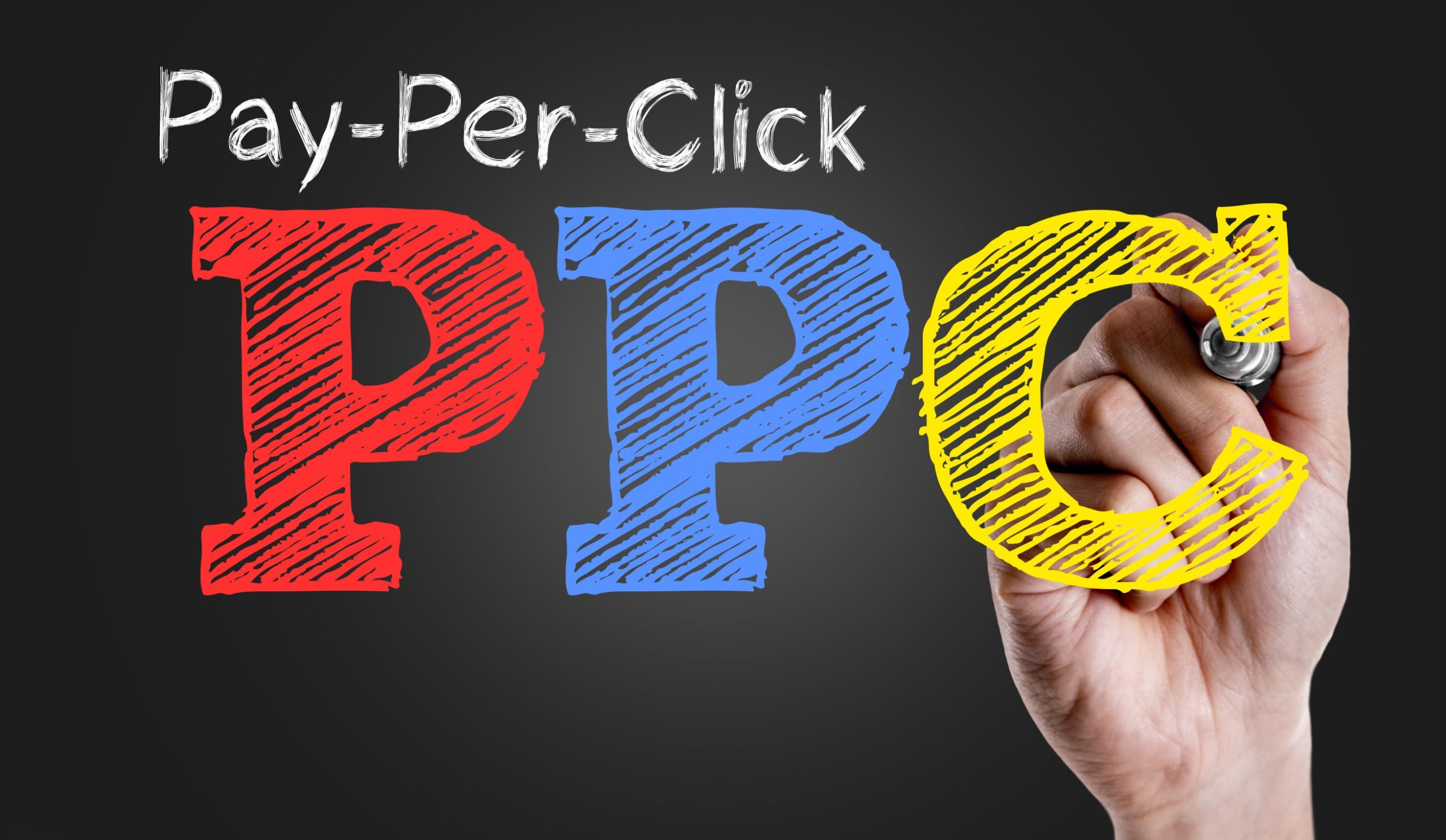
If you’re like most people, you’ve been exposed to online advertising. And if you’re interested in online advertising, you’ve probably heard of the terms: PPC, CPM, CPA, etc.
But what are they, exactly? And how can they help your business?
Well, don’t fret because in this article, you’ll learn exactly what these terms are, why you should consider using them, and how they can boost your brand awareness, traffic, and conversions.
Main metrics used in online advertising
1. PPC (Pay-Per-Click)
PPC is a type of Internet advertising that is used to drive traffic to websites. With PPC, an advertiser pays their platform (typically a search engine, website owner, or network of websites) each time their ad gets clicked.
2. CPM (Cost Per 1,000 Impressions)
CPM is used to measure the effectiveness of an ad campaign by looking into the cost incurred for every 1,000 potential customers who view the ads.
3. CPA (Cost Per Action)
CPA is a metric and pricing model, referring to a specified completed action such as making a purchase, downloading an ebook, registering a member, etc.
4. CPC (Cost Per Click)
CPC is the cost you pay every time someone clicks on your ad. And the payment goes to your platform. Whether it’s a search engine, website owner, or a network of websites.
5. CTR (Click-Through Rate)
CTR is the ratio (or rate) showing how often people who see your ad end up clicking it. It’s commonly used to determine whether the copy is pushing people to take action.
Here’s the formula:
CTR = (Total Measured Clicks ÷ Total Measured Impressions) x 100
And here’s an example:
If 1,000 people read your email, and 5 people clicked on the link in the email, then your click-through rate would be 0.5% because 5 ÷ 1,000 = 0.5%.
6. CVR (Conversion Rate)
CVR is the average number of conversions per ad interaction.
Here’s the formula:
CVR = (Total Attributed Conversions ÷ Total Number of Clicks or Visits) x 100
And here’s an example:
If you had 50 conversions from 1,000 interactions, your conversion rate would be 5% because 50 ÷ 1,000 = 5%
7. ROI (Return on Investment)
ROI is how much profit you’ve made from your ads in relation to how much you’ve spent on them.
Here’s the formula:
ROI = ((Revenue – Cost of goods sold) ÷ Cost of goods sold) x 100
And here’s an example:
Let’s say you have a product that costs $1,000 to produce, and sells for $2,000. You sell 54 of these products as a result of advertising them on Google Ads. Your total sales are $108,000, and your Google Ads costs are $5,000. Your ROI is ($108,000-($54,000+$5,000))÷($54,000+$5,000), or 83.05%.
Understanding the search results
The most popular search engine is Google. This is usually the search engine people use to find almost everything they’re looking for on the Internet. Therefore, it would serve your business well if you learned Google Ads.
The search process is simple: You search on Google, type in a query, and get the results. And as you might expect, it involves your thoughts and expectations at every step of the search process. And guess what?
Other people are just like you. They type certain keywords in the search bar and they expect certain results. And they usually find the answer they want on the first page of the search results.
Now, imagine if you knew what your target audience usually searched for. You’d be able to customize your ads to ensure that your campaigns show right in their faces whenever they’re looking for the solution to their problem.
Finding out which keywords and which ads work together will help you get more visitors to your site, which will, in turn, lead to more conversions. But how exactly does that work?
For example, when a consumer wants to buy an industrial dining table, he may directly enter “industrial dining table” on the search engine, and the result is shown in the following figure:
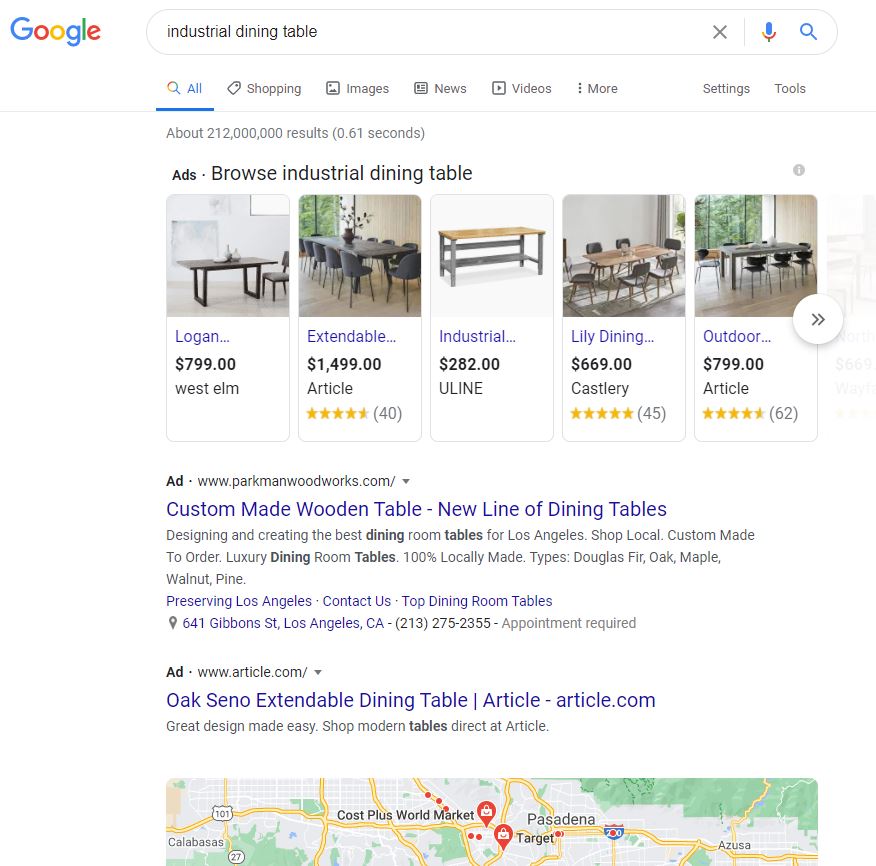
You will see that in the first few results, you will see Ads or Ad which means that these vendors may Advertise under the keywords “industrial dining table” or “industrial style”.
Okay, here’s the thing…
Not every ad gets to be on the first page. Only the most relevant to the consumer gets shown. In other words, if your keywords aren’t ranking high enough, you’re not getting organic traffic, and the search results do not appear on the first page, it will be difficult for your potential customers to find you through active search.
If you don’t have time to wait for the SEO ranking to rise through content marketing, then you can try to use keyword advertising to win the advertising space. Then, if you have successfully exposed yourself in the advertising space and convinced consumers to come to your website… it’s now up to the copy, pictures, and videos to impress your product or brand on them and compel them to take action (i.e. make a purchase).
How to win advertising space?
Keyword advertising is like an auction, and the highest bidder wins the bid.
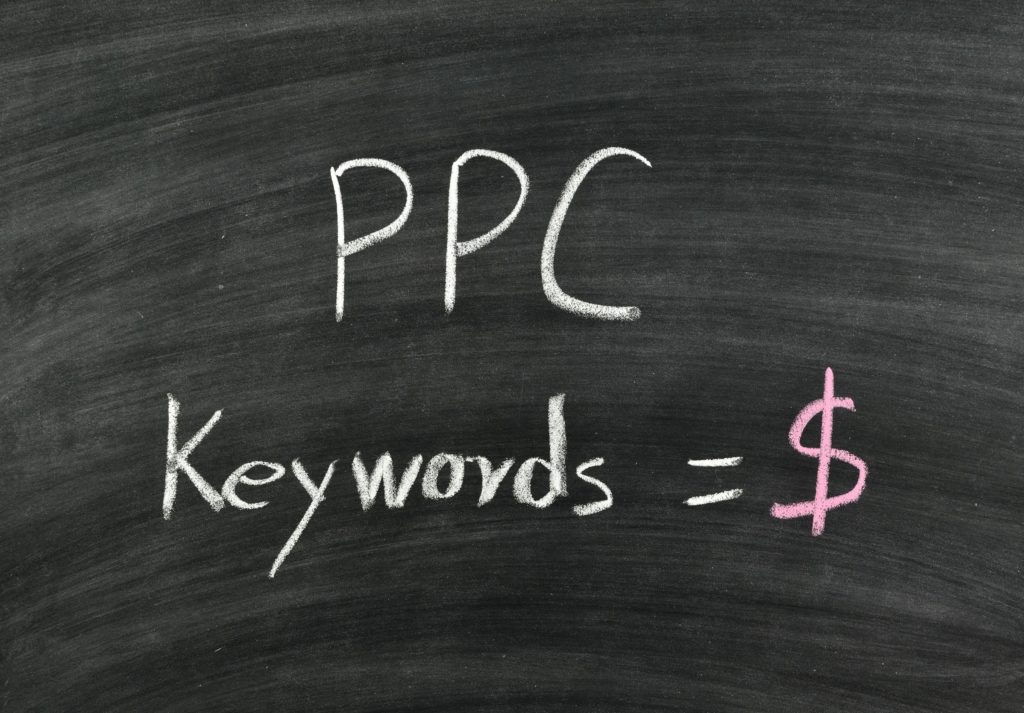 But determining this “price” is not just your bid for a certain keyword. It also includes your quality score. Google determines this by analyzing your click-through rate and landing page relevancy. Once you get your quality score, you’ll know your ad rank by combining both CPC bid and quality score.
But determining this “price” is not just your bid for a certain keyword. It also includes your quality score. Google determines this by analyzing your click-through rate and landing page relevancy. Once you get your quality score, you’ll know your ad rank by combining both CPC bid and quality score.
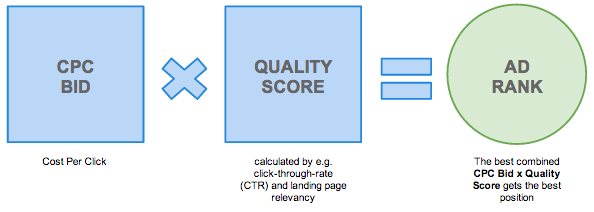 Advertisers must set a budget and bid. The bid represents the amount of advertising you are willing to pay Google every time a consumer clicks on your ad.
Advertisers must set a budget and bid. The bid represents the amount of advertising you are willing to pay Google every time a consumer clicks on your ad.
Take note that Google will not allow your ad content to be exposed just because your bid is the highest. Because there’s a chance that your ad content is completely unrelated to the consumer. And this might frustrate them.
Therefore, with the consumer as the first priority, Google will allow you with better ad content and reasonable bids to gain exposure, rather than those with high bids but poor ad content.
What about Facebook ads?
The pricing method of Facebook Ads is similar to that of Google Ads. Except when it’s launched, it’s not based on keywords, but based on the marketing goals you choose. You can also set your target audience’s parameters…
Some examples:
- Gender
- Age group
- Location
- Fan pages your audience is interested in
- Which followers have liked, commented, and interacted with your posts
Your ad exposure opportunity is mainly determined through the bidding mechanism, and quality and relevance of your ad to Facebook users.
In addition to bidding, Facebook also has a “reach and frequency” option. Simply put, it is how many people you want your ads to reach. And how often users interact with you. Facebook will help you calculate according to the conditions you set — such as the period of time you want to run your ads.
Making an effective reach and frequency campaign involves finding the frequency that suits your goals. Facebook recommends you select Balanced frequency because it defaults to the optimal balance between reach and frequency for your campaign. You can also adjust the frequency of your ads or even create your own custom frequency depending on your campaign goals.
The advantage of using this is that you can expect your ads’ reach and frequency under a fixed CPM bid. If you want to disregard the advertising cost at the initial stage of brand establishment and want to have a large amount of exposure, you can consider this type of advertising method. Facebook will give you a fixed advertising fee.
Optimize your PPC ads to increase the return on investment
1. Choose the right place to advertise
A Slice Intelligence survey report shows that in 2016, 53% of the growth in online sales in the United States came from Amazon. And 43% of the overall online revenue was also from Amazon. So if you are an Amazon seller, consider having Amazon on-site ads so that people can see your products when they’re using the search function.
Of course, you can also place your ads on Facebook, Instagram, and Google. It would just depend on where your potential consumer groups are, and how much you want to distribute the proportion of ads on each platform.
2. Use Analytics
If you don’t know where your customers are “hanging out”, their behavioral patterns, then you can’t optimize your entire sales process. Running your PPC ads is the same. You need to use Google Analytics and… analyze your potential customers. Track every (legal) thing you can track then jot down the details that will help you make better decisions on how to run your ads.
Remember that analytics can give you insights that you won’t necessarily notice on your own. And once you notice the key insights, you can change your ads to better suit your potential customers’ needs.
3. Optimize your advertising content
If you are using keyword advertising, here are some of the things you can do to optimize your ads:
Increase relevant keywords
For example, use long-tail keywords to make it easier for potential customers to find you.
Generally speaking, the keywords people usually use are very accurate. And the probability of being searched is high, but relatively speaking, there are many competitors, and you may not get the opportunity to be exposed by the advertisement.
For example, “Eye Cream” has a search volume of 81,000. Due to the relevance of the bid or the content of the advertisement, you may not be able to get the opportunity to expose the ad. However, when people search for “eye cream”, they may also want to find out if they have other features, such as: moisturizing, wrinkle removal, and spot reduction.
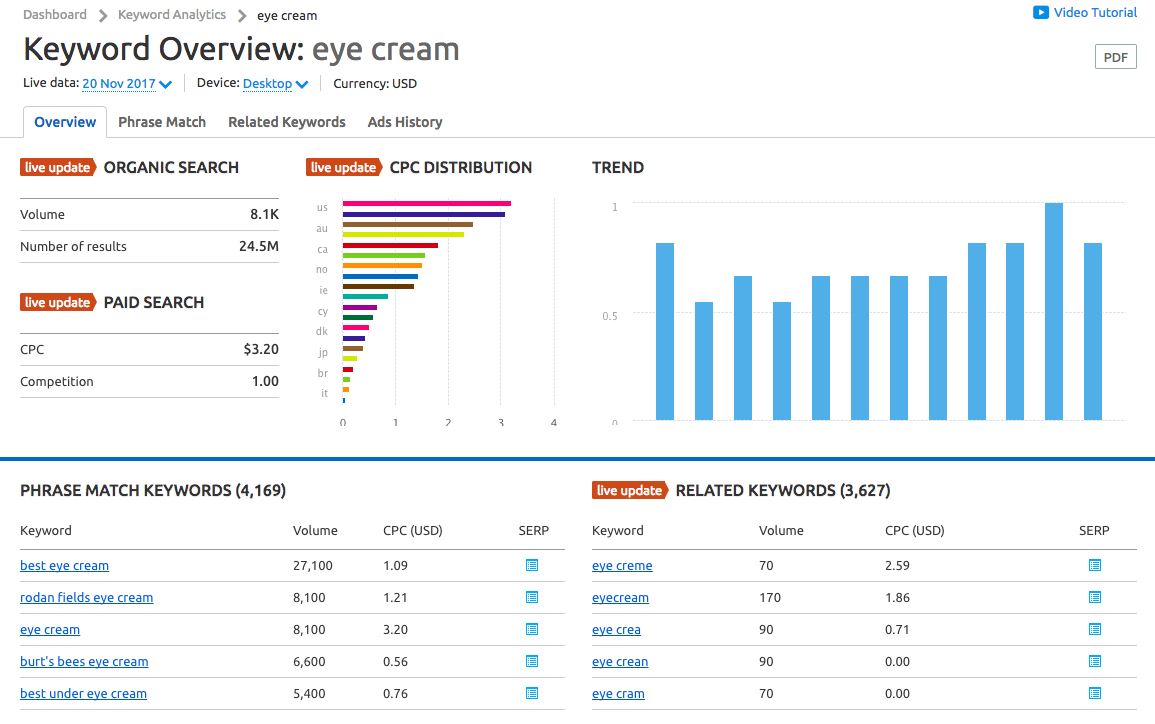
So in addition to setting the keyword “eye cream”, you may also add other keywords to improve the chances of consumers finding you. You can also include the name of a competing product in the list of keywords to increase your exposure.
Note: You can use Google Ads Keyword Tool or Google Trends to understand the market demand changes. Or through Amazon’s external analysis tools (like Helium 10) to understand the current popular related keyword search volume.
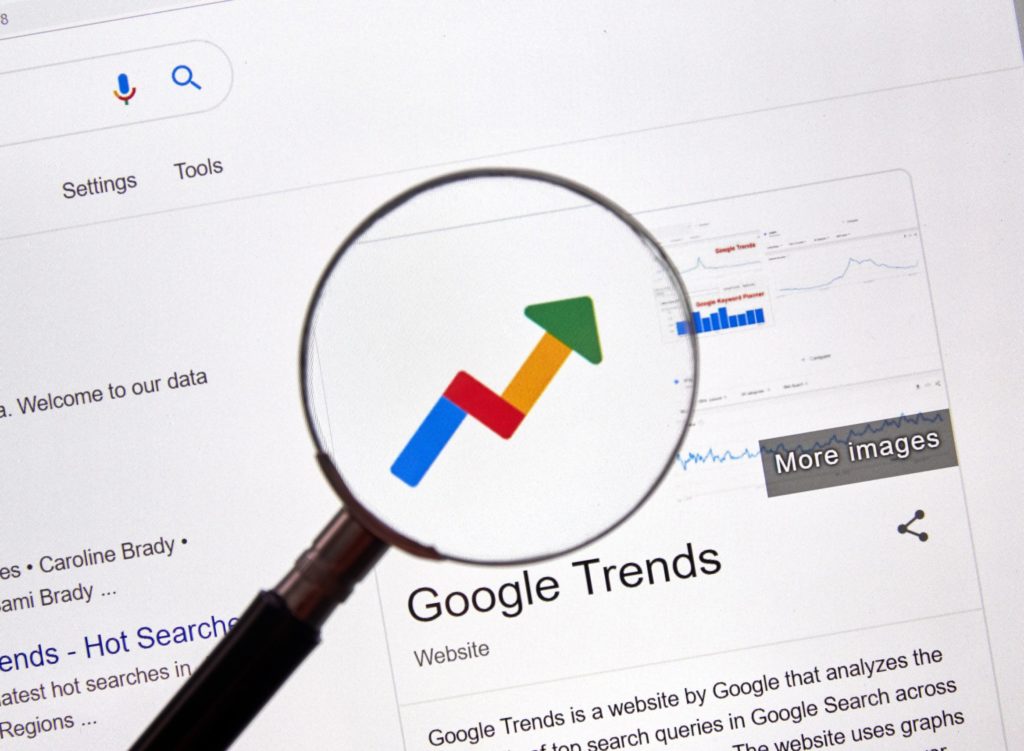
Exclude negative keywords
Remove irrelevant keywords, or filter out customer groups that do not meet your needs by excluding keywords.
For example, if you are selling cosmetic bags, but aren’t selling low-priced cosmetic bags, then you can exclude the word “cheap” from the ad campaign of “cosmetic bags”. And when people search for “cheap cosmetics” they won’t see your ads.
Subdivide the ad group again
For example, you originally expected to sell to people ages 18-39 years old. But you later found out that when you sell the same product to ages 18-29 and 30-39 groups, you need different copywriting or descriptions. At this time, you have to subdivide the groups, rather than clump everyone together and show them the exact same ads.
Find keywords with high CPC
See which keywords have high CPC and poor advertising performance, and stop this advertising campaign when necessary.
4. Try different types of ads
People use different devices when they’re surfing online. With that in mind, you should optimize your ads’ effectiveness by testing different screen resolutions. And see how your PPC ads look on different devices.
Regardless whether it’s on Amazon, Facebook, or Google, there are different layouts and advertising presentation methods you can use. What you have to remember is that whatever device your customers use, they must see the most important aspects of your ads (like features, benefits, reviews, etc.)
 5. Focus on content quality
5. Focus on content quality
If your ad only brings clicks but no conversions…
…or if the number of impressions is high, but it doesn’t bring any clicks…
…then there are several areas you need to think about:
- Copy
- Images
- CTA
- Product price
- Target audience
After attracting people to your website using ads… it’s now up to your website’s content to persuade them to take action (or make a purchase). Otherwise, you’d be swimming in a pool of unnecessary costs. So, take note that you may need to have an irresistible:
- Landing page
- Product information
- User reviews
- Discount offers
- etc.
7. Stay updated
Pay attention to your ad conversions every two or three days. Because it’s likely that you’ll be caught by competitors when you’re not looking. What do I mean? Your competitors are always looking for an edge, that’s why they’re on high alert for any advantage they can gain simply by tweaking their tactics. Sometimes, markets stay the same for a long time. Sometimes, a single event changes them dramatically. So it’s best for you to be up to date with your ads as well as your competitors.
8. Remarketing
Remarketing lets you connect with people who have already visited your website. This allows you to strategically position your PPC ads in front of these audiences. And it will help you increase your brand awareness and remind them to make a purchase.
Here are the benefits of using remarketing strategy:
- Well-timed targeting
- Focused advertising
- Large-scale reach
- Efficient pricing
- Easy ad creation
- Campaign statistics
You now have a basic understanding of PPC advertising. As long as you do market research and actually learn the nuts and bolts of PPC ads, it will be a reliable channel for you to increase your quality traffic and conversions. But take note…
If you don’t do your market research and learn how PPC advertising works, you’ll be putting huge holes in your wallet. Your target audience won’t see your ads and you won’t increase conversions enough to make a profit.
Indeed, it’s a pay-to-play field. But you still have to learn the rules and nuances of the “game”. If you don’t have time to learn PPC ads but you still want to scale your business, click here and you’ll receive a FREE strategy call from an ads expert.


